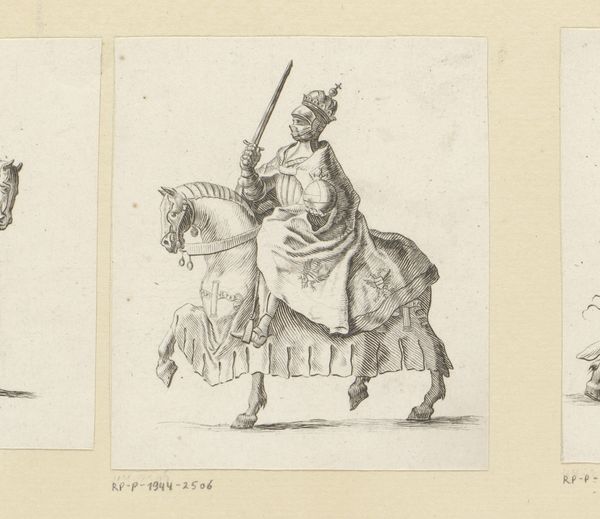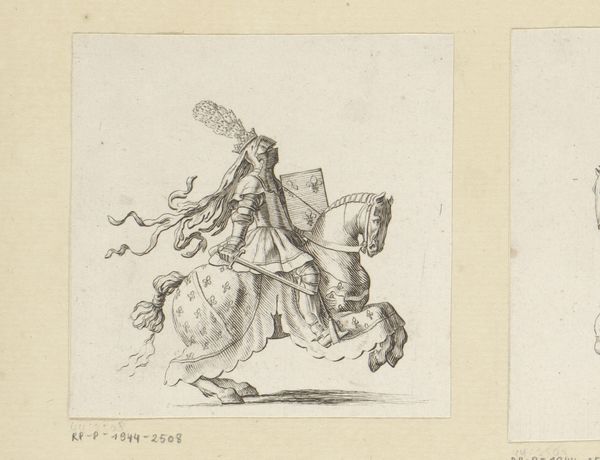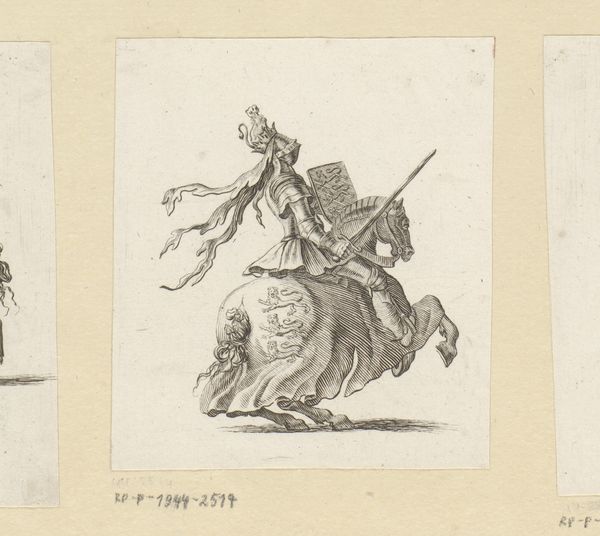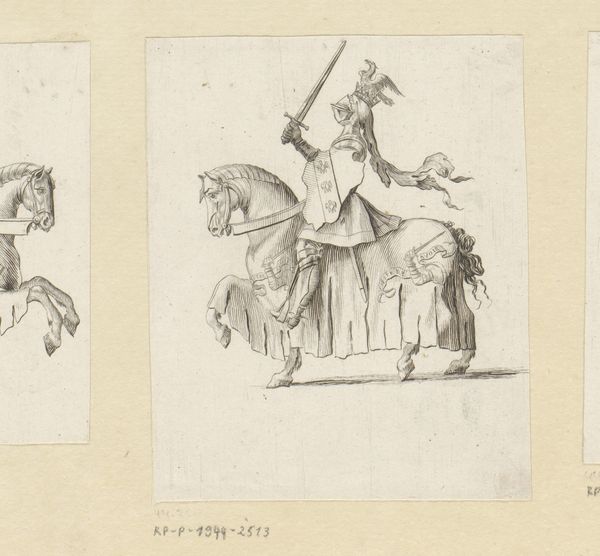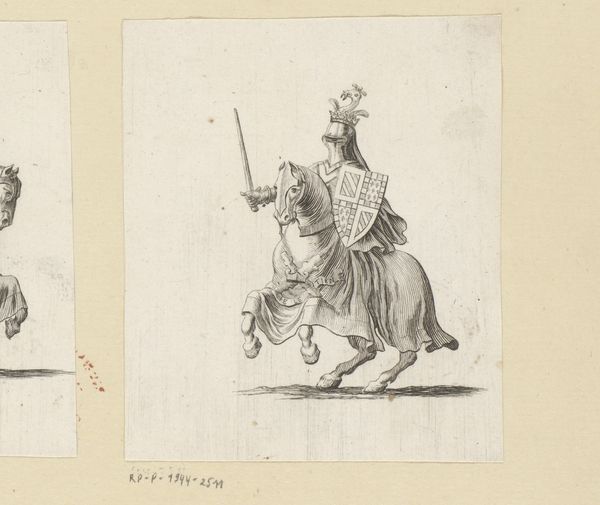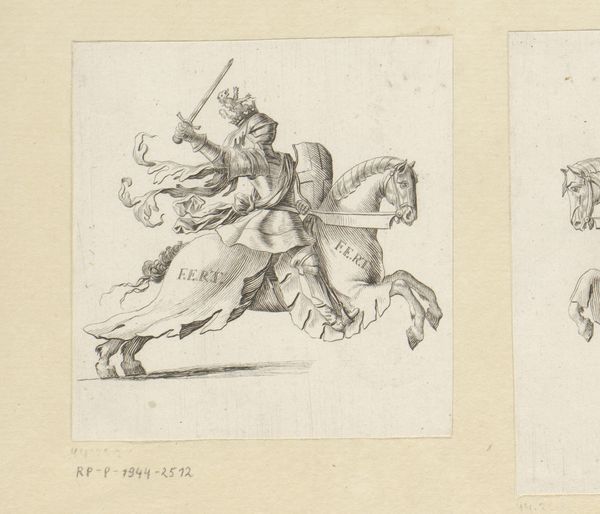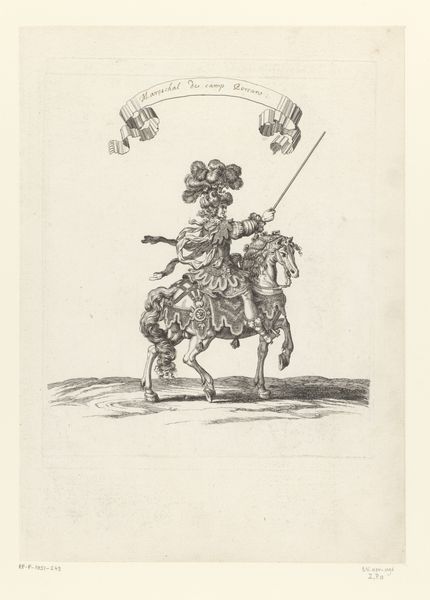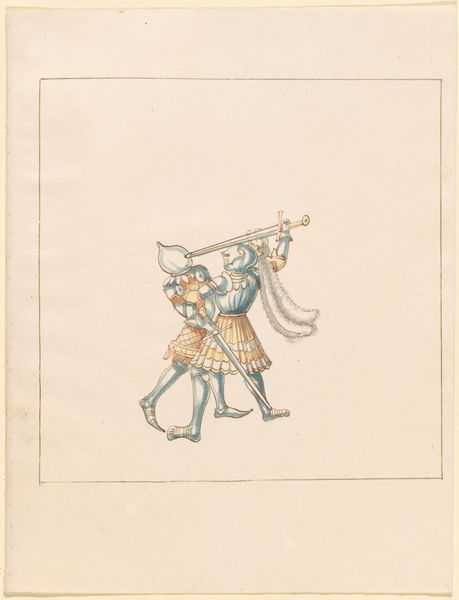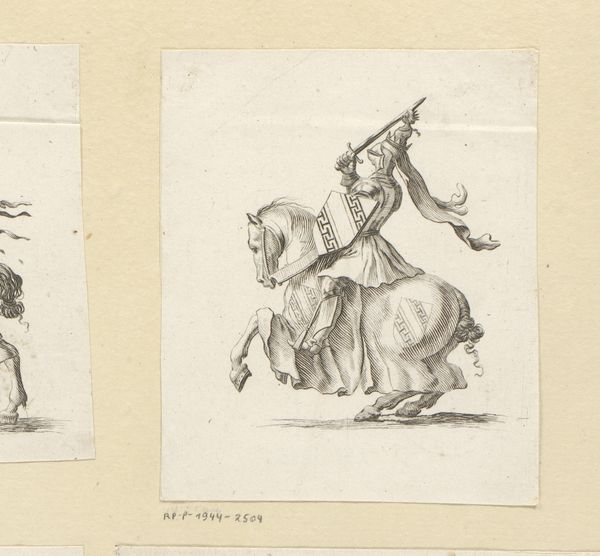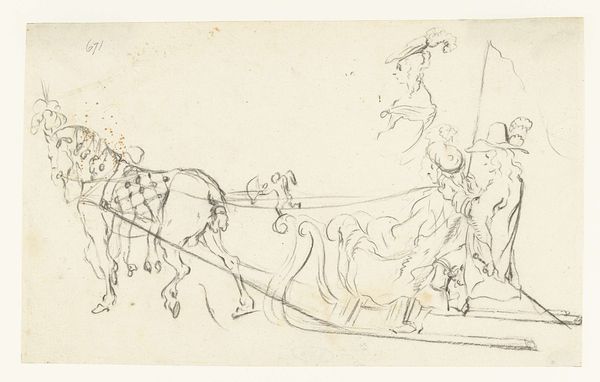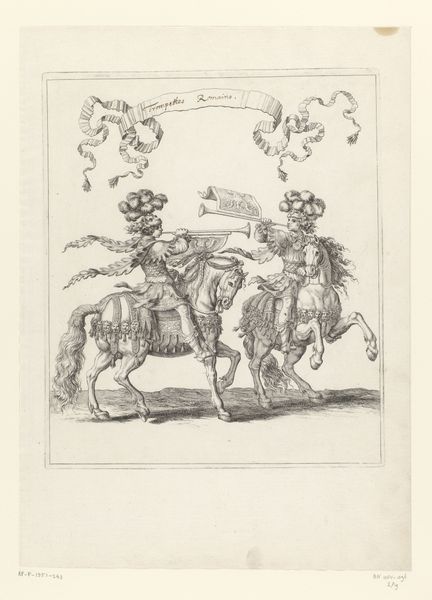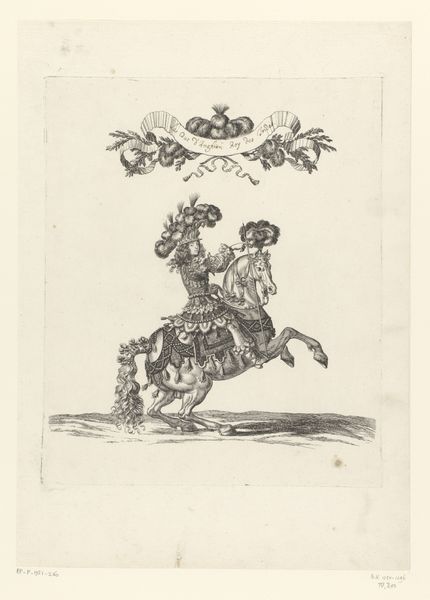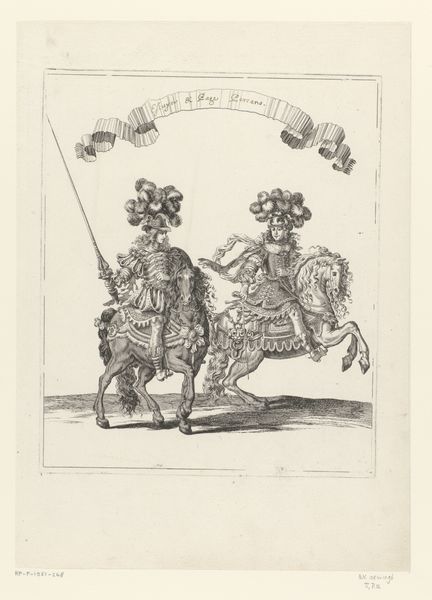
drawing, print, engraving
#
drawing
#
medieval
# print
#
figuration
#
line
#
genre-painting
#
history-painting
#
engraving
Dimensions: height 98 mm, width 93 mm
Copyright: Rijks Museum: Open Domain
Editor: Here we have an engraving entitled "Knight on Horseback in Armour" from after 1647. It’s currently housed in the Rijksmuseum, and its artist is anonymous. The crisp lines of this piece definitely give it a very stately air. What draws your eye when you look at it? Curator: Immediately, the linearity strikes me. Notice how the artist employs line— not merely to delineate form but also to create texture and tone. Look at the cross-hatching, establishing volume, particularly on the horse's draped covering. This print masterfully manipulates line to imply light and shadow, wouldn’t you agree? Editor: I do. So, how would you interpret the iconography beyond just the knight and the horse? Curator: Precisely. Observe the heraldry emblazoned upon the knight's shield and the horse's trappings. These are not merely decorative. They serve a signifying function. Further analyze how the artist meticulously renders each element, emphasizing the formal aspects over a realistic representation. The flattened perspective and attention to detail on the armor's surface, for instance. It's about idealization. Editor: It’s almost like the knight himself is less important than what he represents, given the detail on the heraldry. So what’s the most fascinating formal aspect for you? Curator: It would be how line dictates form. This formal construct results in both a sense of the medieval past, while showcasing advanced engraving techniques. How fascinating that a line, itself so simple, may define depth and meaning. What strikes you most now? Editor: That's fascinating, thinking about lines constructing historical context. I see so much more in just those lines and patterns now!
Comments
No comments
Be the first to comment and join the conversation on the ultimate creative platform.
